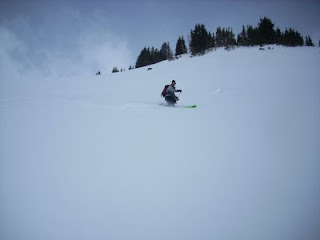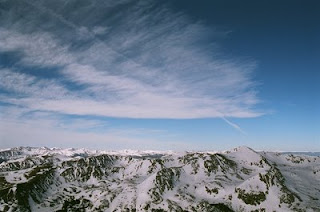One of our favorite places to run is the Carson National Forest. Located just west of Taos and stretching south from the Colorado/New Mexico state line down to the end of the San Luis Valley uplift around Espanola, the Carson National Forest is a trail runners paradise.

Although there are not many officially designated trails in the forest, there are numerous seasonal dirt roads that offer the trail runner miles and miles of empty runs with no people and beautiful scenery. Some of the finest mountain scenery in the Southwest is found in the 1.5 million acres covered by the Carson National Forest. Elevations rise from 6,000 feet to 13,161 feet at Wheeler Peak, the highest in New Mexico. Our objective is to maintain that natural beauty. Most of the longer runs during the winter months start right out of Tres Piedras or just north, on the south side of Antelope Mountain.
One of our favorites that we often do when we are down there is Fire Road 519. This is an amazing run that starts around 9,000+ feet at the top of the forest ecosystem, and then drops down into a secluded valley where you see rock formations, open meadows, secret springs, and more. You can either do this as an out-and-back for a total of around 15 miles, or if you are up for a longer training run, you can combine this with Fire Road 111 making a long 25+ mile loop of soft dirt running.
This area also has a ton of wildlife: wild turkeys, bears, eagles, hawks, deer, and sheep. That's right, parts of the forest are still used in the traditional method for summer sheep grazing and herding. Don't be surprised if you run across an old sheep herder and his flock. They are very friendly, but most don't speak English - just Spanish. It brings flavor to these runs...

It is hard to beat the Carson trail runs when it comes to Northern New Mexico. If you find yourself down in that neck of the woods, grab your running shoes and hit the trails - you won't be disappointed!







